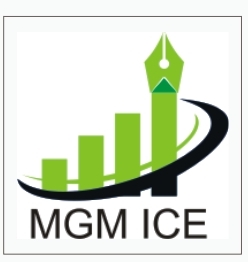UNDERSTANDING PETROL PRICING IN INDIA
A new era has begun in India’s oil sector, with the adoption of dynamic fuel revision methodology of petroleum products by Government of India. The fluctuation in petroleum products’ prices has always been a decisive factor in determining the price level of goods and services in India. The Indian economy is largely dependent on imports of petroleum products from foreign countries, to the tune of 81% of its total requirement. The sustainability of Indian economy is not only dependent on reducing our dependence for petroleum products from outsiders but also on making reforms in the petroleum sector. This article tries to focus on dynamic fuel revision system of petroleum products and its related aspects.
Decontrolling or deregulating the petroleum products’ prices means that the government does not subsidize the petroleum products and the prices are purely linked to the international crude prices. The dismantling of Administered Pricing Mechanism (APM) means that oil companies are free to take independent decisions based on import parity and market forces, in pricing of petroleum products rather than being governed by the dictates of the Government. The APM was created after the Government nationalized the international oil majors – Caltex, Esso and Burmah Shell in the early 1970’s. With the APM, the Government had also established a complex system of Oil Pool accounts, which was administered by the Oil Coordination Committee (OCC). In April 2002, in an attempt to phase out the subsidies on petroleum products, the government dismantled the Administered Pricing Mechanism for pricing of petrol and diesel.
Petrol prices were freed from government control in June 2010 and diesel in October 2014, allowing oil marketing companies to fix retail prices in tune with global crude prices. The State fuel retailers used to revise petroleum products’ rates on the 1st and 16th of every month, based on average international crude price in the preceding fortnight and currency exchange rate. Recently, based on the success of pilot scheme of daily revision of petroleum products in five cities, the dynamic fuel pricing is being implemented all over India w.e.f. 16th Jun 2017. The daily revision system of petrol pricing is expected to bring win-win situation for all the stakeholders. It aims at passing on the smallest of changes in international oil prices down the line to dealers and the end users on a daily basis. It would bring the transparency in the system and put India in the line of developed economies which also follow the dynamic fuel pricing mechanism. The good intentioned dynamic fuel revision method is marred by its faulty implementation.

Currently, the price of petrol at the point of oil refinery is approximately Rs 24 per litre based on the lowered international crude oil prices (51 dollars per barrel) whereas the same petrol is sold at the retail level at the cost of approximately Rs 78 per litre. The hopping Rs 54 per litre of petrol is charged as taxes by the Government and the OMCs. The Excise duty charged by Central Government and VAT levied by the respective State Governments constitute the maximum chunk of this increase in price. The basic aim of dynamic fuel revision system of benefiting the customers is eclipsed by the levy of indirect taxes by the Central and State Governments.
It is ironical that the retail petroleum products prices were around Rs 70 per litre of petrol during UPA Government regime when the international crude oil prices were hovering around 140 dollars per barrel and currently, despite of a huge slide down of global crude prices to the level of 50 dollars per barrel, the retail petrol prices are touching Rs 80 per litre. This discrepancy and resultant frustration amongst common people is due to non-reduction of Excise duty and VAT charges by the Central and State Government respectively.
It is not important that which Government is in power, but what matters is what changes you brought in the lives of people! Despite of a landmark indirect taxation reform of GST in India, the petroleum products are still kept outside the purview of GST and are being levied with higher rates of indirect taxes by Central and State Governments. It’s the high time that Government must reduce the indirect taxes on petroleum products and pass on the benefit of reduction of prices to the common people and bring smiles on the faces of common people of India.
(The author of this article ,Lt Col (Dr) Satish Dhage, is an ex Army officer and has been qualified for IPS (Indian Police Services) through IPS LCE 2012. Presently, he is Director, MGM Institute of Competitive Exams Aurangabad. For any queries or feedback, he can be contacted on email id : drsatishdhage@gmail.com)



